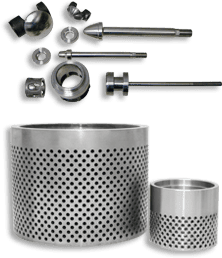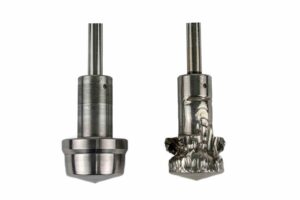Table of Contents
Are you curious about control valves and how they play a crucial role in various industries?
In this article, we will explore control valves in a nutshell, focusing on valve design and the factors to consider when selecting the right control valve for your application. So, let’s dive in and unravel the world of control valves!
1. Introduction to Control Valves
Control valves are fundamental components in industrial processes that regulate fluid flow, pressure, and temperature. They are vital for maintaining precise control over the process variables, ensuring optimal operation and safety. Control valves are commonly used in various industries, including oil and gas, chemical, power generation, water treatment, and many others.

2. Valve Design Principles
There are some valve design principles given below:-
2.1 Types of Control Valves
Control valves come in different types, each suitable for specific applications. The main types of control valves include:
- Globe Valves: These valves have a linear motion disk that lifts perpendicularly to the flow path. They are suitable for precise control and modulating applications.
- Butterfly Valves: Butterfly valves feature a disk that rotates on an axis to control the flow. They are lightweight, compact, and ideal for larger pipe sizes.
- Ball Valves: Ball valves use a rotating ball with a bore to regulate the flow. They offer fast-acting control and tight shut-off.
- Plug Valves: Plug valves have a tapered or cylindrical plug that rotates to control the flow. They are commonly used in demanding applications that require tight shut-off.





2.2 Valve Components and Construction
Control valves consist of various components, including the actuator, valve body, trim, and accessories. The actuator provides the necessary force to operate the valve, while the valve body houses the trim and provides a passage for the fluid. The trim, which includes the plug, disk, or ball, interacts with the flow to regulate it. Accessories such as positioners and controllers enhance the valve’s performance and control accuracy.





3. Factors Affecting Control Valve Selection
Choosing the right control valve for your application involves considering several crucial factors. Let’s explore the key factors to keep in mind during the selection process.
3.1 Process Conditions and Parameters
Understanding the process conditions and parameters is vital for selecting an appropriate control valve. Factors such as fluid type, pressure, temperature, flow rate, and pipe size must be evaluated to ensure compatibility and optimal performance.
3.2 Flow
Fluid flow characteristics play a significant role in control valve selection. Different valve designs exhibit varying flow characteristics, including linear, equal percentage, and quick-opening. It’s essential to match the valve’s inherent flow characteristic to the process requirements for precise control.




3.3 Material Compatibility
Considering material compatibility is crucial to ensure the control valve can withstand the process conditions and fluid properties. Valves should be constructed using materials that resist corrosion, erosion, and other potential damage caused by the fluid.
3.4 Control Valve Sizing
Proper control valve sizing is essential to achieve accurate control and prevent issues such as cavitation or excessive pressure drop. The valve size should be selected based on the required flow rate, pressure drop, and the system’s characteristics.
3.5 Noise and Cavitation Considerations
Noise and cavitation can adversely affect control valve performance and the overall process. Choosing valves with appropriate noise and cavitation reduction features helps mitigate these issues, ensuring smooth operation and longevity.





3.6 Maintenance and Reliability
Considering maintenance requirements and valve reliability is crucial for minimizing downtime and optimizing the lifecycle cost. Valves should be designed for easy maintenance, and their reliability track record should be taken into account during the selection process.
4. Conclusion
Control valves play a vital role in regulating fluid flow, pressure, and temperature in various industries. Understanding valve design principles and considering factors such as process conditions, flow characteristics, material compatibility, sizing, noise, and maintenance is crucial when selecting the right control valve. By making informed choices, industries can ensure optimal process control, enhance safety, and improve overall efficiency.
5. Frequently Asked Questions (FAQs)
Q1: What is the purpose of a control valve?
A1: Control valves are used to regulate fluid flow, pressure, and temperature in industrial processes, ensuring precise control and optimal operation.
Q2: What are the main types of control valves?
A2: The main types of control valves include globe valves, butterfly valves, ball valves, and plug valves.
Q3: How do flow characteristics affect control valve selection?
A3: Different valve designs exhibit varying flow characteristics, which must be matched to the process requirements for accurate control.
Q4: Why is material compatibility important in control valve selection?
A4: Material compatibility ensures that the control valve can withstand the process conditions and fluid properties without experiencing corrosion or erosion.
Q5: How does maintenance impact control valve selection?
A5: Considering maintenance requirements and valve reliability helps minimize downtime and optimize the lifecycle cost of the control valve.
Read Also
- Troubleshooting common Control Valve Problems
- How to Solve On-Off Valve Problems ?
- Control valve Leakage Problem